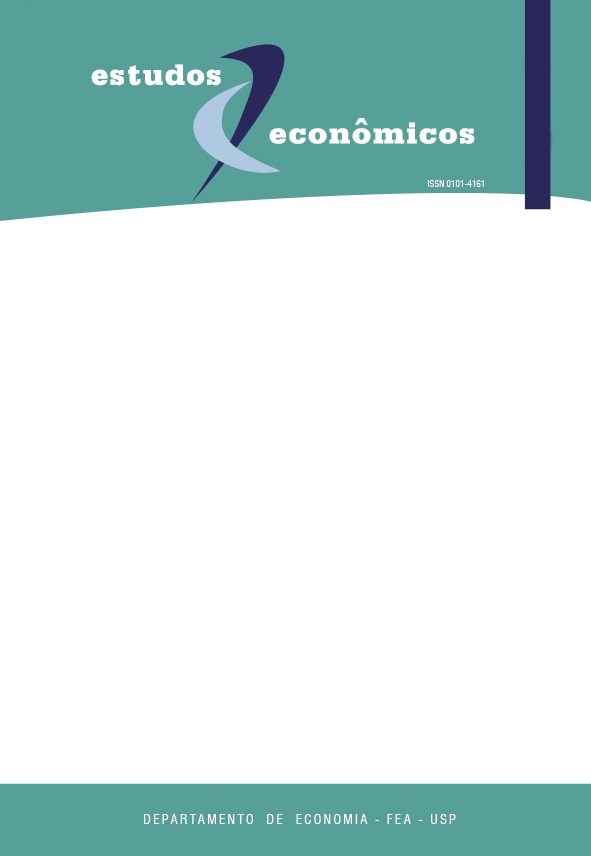Condicionantes da saída da pobreza com microcrédito: o caso dos clientes do Crediamigo
DOI:
https://doi.org/10.1590/S0101-41612011000100005Keywords:
microcredit, conditions, escaping povertyAbstract
In this article we investigate some factors which contribute to alleviate the poverty conditions of the clients of the Crediamigo/BNB, as well as we estimate the velocity of ascension in this microcredit program, which is responsible for more than 65% of the market in Brazil. We use a logistic model for the probability of escaping poverty applied to the clients entering in the program with family per capita income below some traditional poverty lines. We found that the factors contributing to the rise of the poor are no different than the traditional factors for investors in the top of the production scale. That is, a higher probability of success occurs for those more endowed with human capital and productive collaterals. With respect to the features of the borrowings, we verified that short payment periods with median values for the initial credit facilitate the success of the micro entrepreneurs. We also estimated an average of escaping velocity of poverty around 6% and 8% a year during the first five years of program. This finding shows the high efficiency of the program which can be an important reference to development policies with focus both on market improvement and social inclusion.
Downloads
References
Journal of Economics, v.109 p. 465-90, 1994.
ARMENDARIZ, B. A.; MORDUCH, J. The economics of microfinance. Cambridge, MA: The MIT Press, 2005.
CHOWDHURY, M. J. A.; GHOSH, D.; WHIGHT, R. E. The impact of microcredit on poverty: Evidence from Bangladesh. Progress in Development Studies, v. 5, n. 4, 2005.
COPESTAKE, J.; DAWSON, P. ; FANNING, A.; MCKAY, A.; WRIGHT-REVOLLEDO, K. Monitoring diversity of poverty outreach and impact of microfinance: a comparison of methods using data from Peru. Development Policy Review, v. 23, n. 5, 2005.
DE SOTO, H. O mistério do capital. Rio de Janeiro: Record, 2000.
GOLDBERG, N. Measuring the impact of microfinance: taking stock of what we know. Washington, DC: Grameen Foundation USA, 2005. (Publication Series).
Disponível em: <http://www.grameenfoundation.org>.
HULME, D.; MOSLEY, P. Finance against poverty. London: Routledge, 1996. v. 1 e 2.
KARLAN, D. Microfinance impact assessments: the perils of using new members as a control group. Journal of Microfinance, v. 3, n. 2, 2001. Disponível em: <https://
marriottschool.byu.edu/esrreview/current/JMF_fall01.pdf#page=78>.
KHANDKER, S. R. Micro-finance and poverty – Evidence using panel data from
Bangladesh. Policy Research Working Paper 2945. Washington, DC: The World
Bank, 2003.
LONG, J. S. Regression models for categorical and limited dependent variables. Thousand Oaks, Califórnia: SAGE Publications, 1997.
MANSO, C. A.; GORDIN, F. O.; SILVA, R. A. Uma análise comparativa sobre a evolução dos principais indicadores de bem-estar para o Brasil, Regiões e Estados pós-plano real. Fortaleza: Laboratório de Estudos da Pobreza – CAEN-UFC, 2008.
MORDUCH, J. Does microfinance really help the poor? New Evidence from Flagship Programs in Bangladesh, 1998. Mimeo.
NERI, M. C. Mapa de ativos: combate sustentável à pobreza. Rio de Janeiro: Fundação Getulio Vargas, IBRE, CPS, 2001.
PEROTTI, R. Income distribution, politics and growth. American Economic Review, v. 82, p. 311-16, 1992.
PERSSON, T.; TABELLINI, G. Is inequality harmful for growth? Theory and evidence.
American Economic Review, v. 84 p. 600-21, 1994.
SCHRIEDER, G.; SHARMA, M. Impact of finance on poverty reduction and social capital formation: a review and synthesis of empirical evidence. Savings and Development, 23 p. 67-93, 1999.
SEBSTAD, J.; CHEN, G. Overview of studies of the impact of microenterprise credit.
Washington D.C: Management Systems International, 1996.
SHARMA, M.; BUCHENRIEDER, G. Impact of microfinance on food security and poverty alleviation: a review and synthesis of empirical evidence. In: ZELLER, M.; MEYER, R. L. (Ed.). The triangle of microfinance: financial sustainability, outreach and impact. Baltimore MD: John Hopkins University Press, 2002.
World Bank. Brazil Measuring Poverty Using Household Consumption, 2007. (Report No. 36358-BR). Disponível em <http://web.worldbank.org>. Acesso em 23/01/2008.
Downloads
Published
Issue
Section
License
Copyright (c) 2011 Ricardo Brito Soares, Flávio Ataliba Barreto, Marcelo Teixeira Azevedo

This work is licensed under a Creative Commons Attribution-NonCommercial 4.0 International License.
By submitting an article, the author authorizes its publication and attests that it has not been submitted to any other journal. The original article is considered final. Articles selected for publication are proofread for grammatical and orthographic errors. The journal does not pay rights for published articles. The Institute of Economic Research from the School of Economics, Business and Accounting of the University of São Paulo (Instituto de Pesquisas Econômicas da Faculdade de Economia, Administração e Contabilidade da Universidade de São Paulo) owns the journal's copyright.




